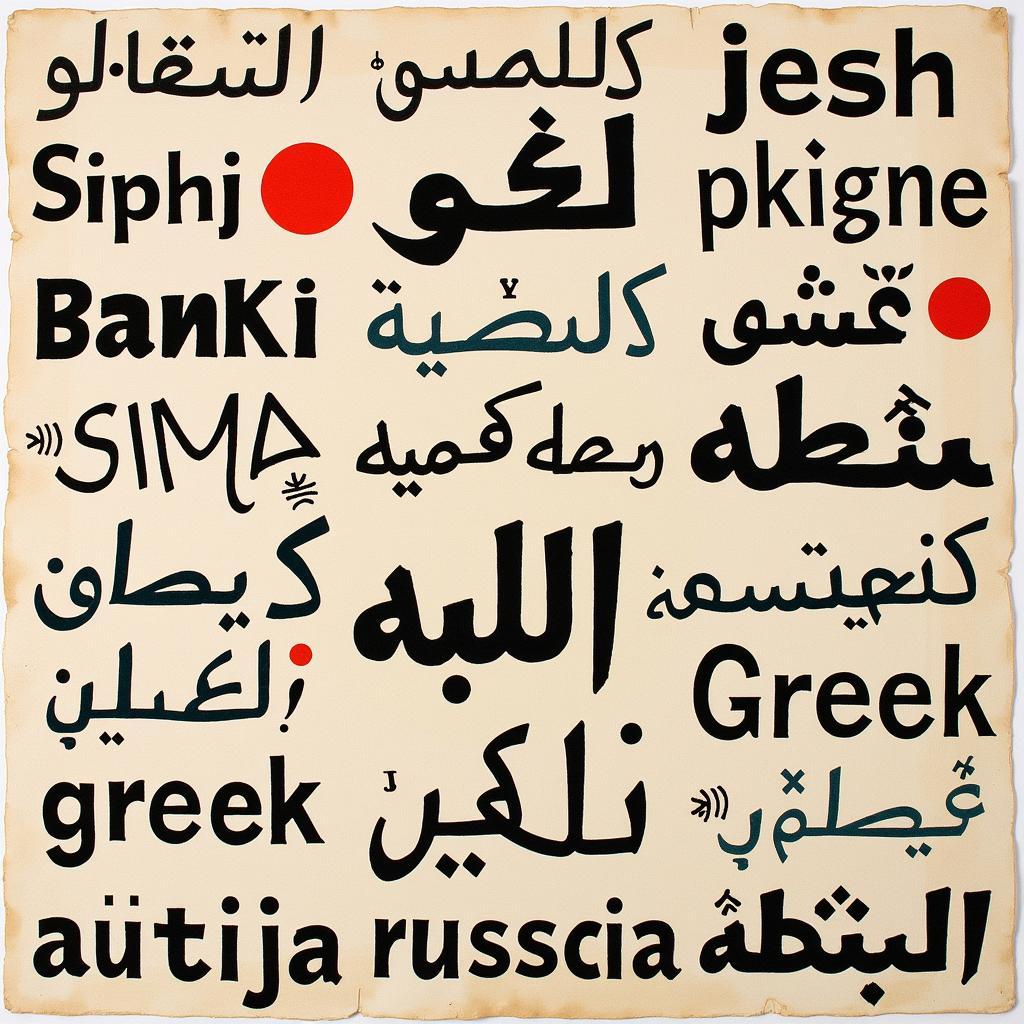“Letras Raras” – a term that piques curiosity and sparks intrigue, especially for those unfamiliar with its meaning. Essentially, it translates to “rare letters” in English, hinting at something unique and unconventional within the realm of language. But what exactly constitutes “letras raras”? What makes them stand out in a world saturated with words and characters?
Delving into the World of “Letras Raras”
“Letras raras” encompass a fascinating spectrum of characters that extend beyond the familiar 26 letters of the English alphabet. They represent a world of linguistic diversity, encompassing:
- Diacritics: Marks added to letters to indicate a different pronunciation or meaning, like the acute accent (á) or the umlaut (ü).
- Special Characters: Symbols and glyphs not found in the basic alphabet, often used in mathematics, science, or computer programming, such as the ampersand (&) or the copyright symbol (©).
- Letters from other Alphabets: Characters from languages like Greek (α, β, γ), Cyrillic (А, Б, В), or Korean (ㄱ, ㄴ, ㄷ) that add a touch of exoticism and intrigue.
The allure of “letras raras” lies in their ability to transform ordinary text into something visually captivating and culturally rich. They possess the power to evoke emotions, create a sense of mystery, and transport readers to different parts of the world through the mere stroke of a key.
The Significance of “Letras Raras”
Beyond their aesthetic appeal, “letras raras” play a crucial role in communication and cultural expression. They contribute to:
- Language Accuracy: Diacritics, for instance, are essential for differentiating words with different meanings, such as “resume” (to start again) and “résumé” (a document outlining work experience).
- Cultural Preservation: Languages with unique characters, like Japanese or Arabic, rely on these letters to maintain their linguistic identity and pass down their cultural heritage through written communication.
- Brand Identity: Companies and individuals often incorporate “letras raras” into their logos and names to create a distinctive and memorable brand image.
 Letras Raras in Different Languages
Letras Raras in Different Languages
Embracing the “Letras Raras”
In a digital age where communication transcends borders, embracing “letras raras” becomes increasingly important.
- Expand your linguistic horizons: Learning about different alphabets and characters opens doors to new cultures and perspectives.
- Enhance your creative expression: Incorporating “letras raras” into your writing or designs can add a touch of originality and sophistication.
- Promote inclusivity: Using diacritics correctly ensures accurate representation and inclusivity for individuals with diverse linguistic backgrounds.
“Letras raras,” far from being insignificant or irrelevant, enrich our communication, broaden our cultural understanding, and add a touch of magic to the written word. Embrace their uniqueness and explore the world of linguistic diversity that awaits.
Frequently Asked Questions About “Letras Raras”
- What is the purpose of using diacritics? Diacritics help clarify pronunciation and distinguish between words with different meanings.
- Are “letras raras” only found in foreign languages? No, special characters and symbols are also considered “letras raras” and are used in various fields, including mathematics and computer programming.
- How can I learn more about different alphabets and their characters? Online resources, language learning apps, and cultural exchange programs offer valuable insights into diverse writing systems.
Need Help Navigating the World of “Letras Raras”?
Contact us! We’re here to assist you.
Phone: 0902476650
Email: [email protected]
Address: 139 Đ. Võ Văn Kiệt, Hoà Long, Bà Rịa, Bà Rịa – Vũng Tàu, Việt Nam
Our dedicated customer support team is available 24/7 to answer your questions and provide expert guidance.





